Selected Works by Scott Kolbo

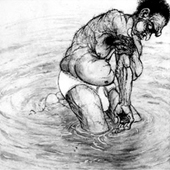
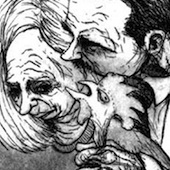
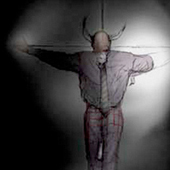


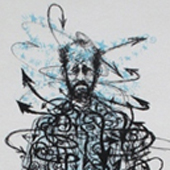
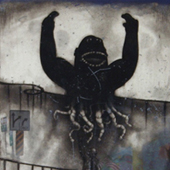
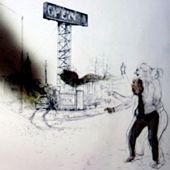

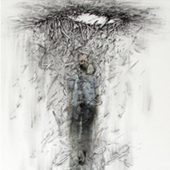

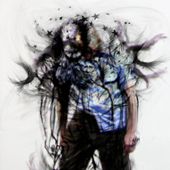
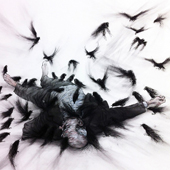
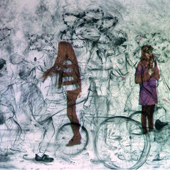
What Scott Said About Cartoons
Fred: I talk in the "Perspicuous Objects" about Scott McCloud's (1993/1994) suggestion that the more abstract an image is, the more quickly it yields up meaning, but the less complex that meaning is likely to be. Your drawings in "Sonic Medicine" (Kolbo, 2013b) are not iconic in the way that drawings by many comics artists are iconic; they're certainly well left of the iconic right-hand corner. But your human figures are cartoon-like. Do you see yourself as cartooning in your work?
Scott: I think my work is highly influenced by cartooning, but I don't think I fit the definition completely as McCloud describes it. The idea that simplified or idealized cartoon images make a sort of symbol system that is read in much the same way we read language is quite insightful and, I think, true. However, I'm not really all that interested in having the meanings of the drawings yield themselves up quickly. I would like to encourage contemplation and complexity, but not in a way that becomes distracting or overwhelming. My hope is that I am using the language of comics and visual narratives to keep the viewer involved and following along, but I want them to spend more time trying to figure out what all the visual cues mean. I'd love it if my stuff worked the way that [Kurt] Vonnegut's novels do. He uses the narrative language of cheap science fiction to help readers feel like they can easily engage the story, but then he throws in all these philosophical curveballs that lead toward deeper contemplation. This is obviously a tall order and a ridiculous comparison for me to make, but when I think about using cartoons in my work I think of it this way. It's sort of a weird artistic project, and might be a huge failure in the end, but it gives me something to do as I pass the time...
I think that the other place where my approach diverges from true cartooning is my reliance on digital and photographic information. Many comic artists use photos as reference, but I am trying to embed this digitally captured imagery in the work in such a way that it transcends its source and becomes something else. Because of the specificity of the digital imagery, I would place "Sonic Medicine" on the left-hand side of McCloud's (1993/1994) pyramid (closer to what he calls "realism") and up the scale towards abstraction, toward the picture plane (because so many of the marks serve no specific purpose and are there for expressive purposes). However, I also tend to use areas of simplified cartoony drawing, often drawing right over the top of photographic elements. I think that this combination creates some interesting tension, but it also wreaks some havoc on my pyramid placement. It might be too strange an approach to fit into cartoons, but I wouldn't have come up with it without a ton of exposure to the language of sequential storytelling and a deep love for that style of drawing.
Scott's homepage is accessible here.



